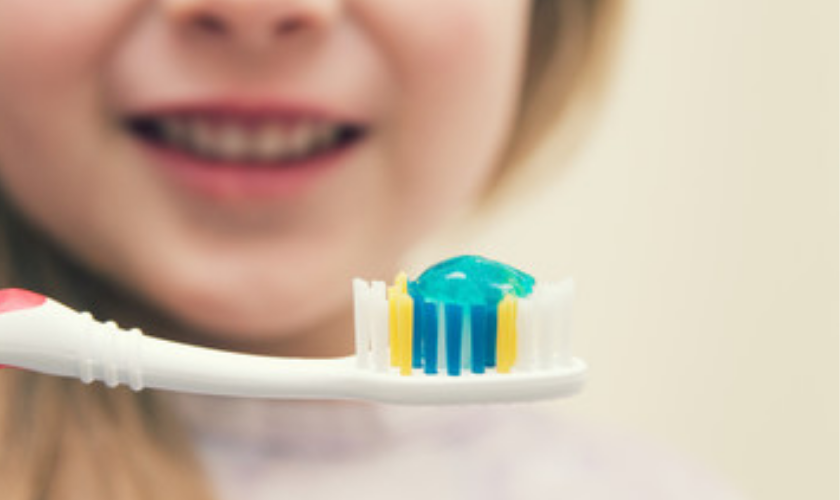The first tooth is a significant achievement. When that first pearly white breaks through, it is a huge relief for the parents and babies suffering from teething discomfort! However, a baby’s first teeth bring with them an additional duty to focus on excellent dental care at an early age. It’s a good idea to introduce your child to the practice of brushing his or her teeth with a toothbrush and toothpaste so that it becomes part of your routine and one less conflict throughout the toddler years.
Why brush primary teeth?
The significance of preserving the health of primary (baby) teeth is sometimes overlooked. Primary teeth are necessary for speech production, chewing, and jaw development. It is also important for optimal alignment and spacing of permanent adult teeth. Brushing primary teeth avoids foul breath and tooth decay while also removing plaque bacteria linked to pediatric periodontal disease.
When can babies begin to use toothpaste?
You can begin cleaning an infant’s mouth after birth by wiping down their gums with a soft cloth or moistened gauze. Brushing a baby’s teeth should begin as soon as their first tooth appears. Use a little, soft infant toothbrush and a tiny smear of toothpaste the size of a grain of rice. Parents are frequently hesitant about using fluoride toothpaste on their babies, although it is suggested as soon as they have their first tooth.
Fluoride, in the appropriate dose, is completely safe for children. It is a natural mineral that strengthens teeth and protects the enamel from cavity-causing acids present in plaque. It aids in the killing of some of the harmful bacteria in the mouth. While fluoride-free toothpaste for babies is available, the American Dental Association suggests using a very small amount of normal fluoride toothpaste for children. They point out that there is an advantage of providing fluoride early because around 25% of youngsters have developed a cavity before attending kindergarten. Because tooth decay is the most frequent chronic pediatric disease, preventative treatments such as using fluoride toothpaste are critical.
What should you look for in a child’s toothpaste?
Learn what to look for in baby toothpaste. Children’s toothpaste should meet a few important criteria, such as :
- Fluoride: Fluoride toothpaste is recommended for children aged three and up. We feel that fluoride is important for tooth enamel strength. Fluoride is the way to go as long as a child can spit out his or her toothpaste.
- Flavor: Your child’s oral hygiene should be comfortable and enjoyable. It’s critical to select toothpaste that your youngster enjoys or, at the very least, tolerates. Manufacturers have created a wide range of flavors to pick from, such as strawberry, soft mint, and bubble gum. It is critical to choose a flavor that your child appreciates to make brushing a pleasurable process.
- The ADA Seal: The American Dental Association (ADA) evaluates the safety and effectiveness of the toothpaste. A toothpaste with the ADA mark has all of the necessary elements to keep your child’s teeth cavity-free.
Why is it important to consult your pediatric dentist before choosing toothpaste?
The variety of toothpaste available might be confusing at times. Visit Joyful Smiles Pediatric Dentistry if you are looking for the best pediatric dentist in Bradley IL. Our pediatric dentist will be delighted to recommend the best toothpaste for your child, considering his or her specific needs as well as any special considerations, such as sensitivities or poor enamel.
We hope that this blog has provided you with a clear understanding of how to Choose the Best Toothpaste for Kids. If you are looking for the best preventive dental treatment in Bradley, IL, visit Joyful Smiles Pediatric Dentistry. Our pediatric dental team offers the best solutions for your child’s dental requirements.








